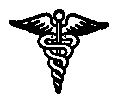 SLISHMAN
SPLINT TM
SLISHMAN
SPLINT TM SLISHMAN
SPLINT TM
SLISHMAN
SPLINT TM
Informed Consent
Risks associated with the Slishman Splint should be minimal, but we will list them here for its 3 primary uses.
1. Femoral traction.
Any mechanism that applies traction to
a limb causes pressure points. In our case, these points are at the ankle
and the groin, and along the lateral aspect of the leg. The force
required for initial bony alignment is greater than that necessary for
traction maintenance. Because the splint is so inconspicuous, it
is easy to ignore once applied, but frequent reassessment is required.
Adjustments should be made based on examination of pulses and capillary
refill, foot sensation and movement, and dermal examination of the various
pressure points, and perhaps most importantly based on the question “how
does that feel?”
Because of the splint’s mechanical advantage, significant traction force may be applied. Complications associated with limb ischemia, or damage to nerves, vessels, skin, etc. are conceivable, but with adequate monitoring and padding over pressure points, these problems should be easily avoided.
2. Shoulder reduction.
Similar issues related to traction and
pressure points exist here, but because use is short term, the relative
risk for arm ischemia is less than the risk for leg ischemia. On
the other hand, the tension applied to the arm is greater, even though
controlled by the patient. The risks of causing musculoskeletal injury,
damage to the axillary nerve or brachial plexus, or skin tears are probably
present, though no cases have been reported. Again, because patients
control the traction it is hard to believe that the relative risks for
these problems could be greater than the risks for existing shoulder reduction
techniques.
3. Skiing and hiking.
The Slishman Splint is a modified ski
pole, but the modification has not weakened the overall structure of the
pole. Thus the risks associated with use of the splint for recreation
are not different than those for existing collapsible poles that use the
Flicklock brake mechanism.
Ski baskets with holes carry a risk for catching objects while skiing. Apparently rules exist “outlawing” production of ski baskets with holes for downhill ski poles. However, you will certainly see many rule breaking baskets on the slopes. This issue probably applies to the traction cord as well if you choose to tie it in a loop. So we recommend that you beware of this risk, and consider the monkey fist knot rather than a loop, as depicted on our knots page, if using the splint recreationally.
General disclaimer.
The Slishman Splint is a new device.
It has been tested over 30 times for shoulder reductions. Not all
tests resulted in successful reductions, but no complications occurred.
It has also been used over 20 times for femoral traction without complication.
In 5 cases the splint was left on over night prior to surgery rather than
traction pinning. No conclusions can be drawn yet from such small
numbers, so the device is still very experimental. The FDA considers
traction splints to be “Class I, exempt," which implies that no investigational
device exemptions or premarket approvals are required. Traction splints
are listed in the FDA database under product code KQZ, regulation number
888.5890. Our registration number is 2954965. This does not imply
FDA approval. But it does provide a means for tracking if complications
arise. We invite you to please report to us any problems that you
may discover, however, we assume no liability for such problems.
Please also feel free to communicate to us any general design modifications
you may consider useful.